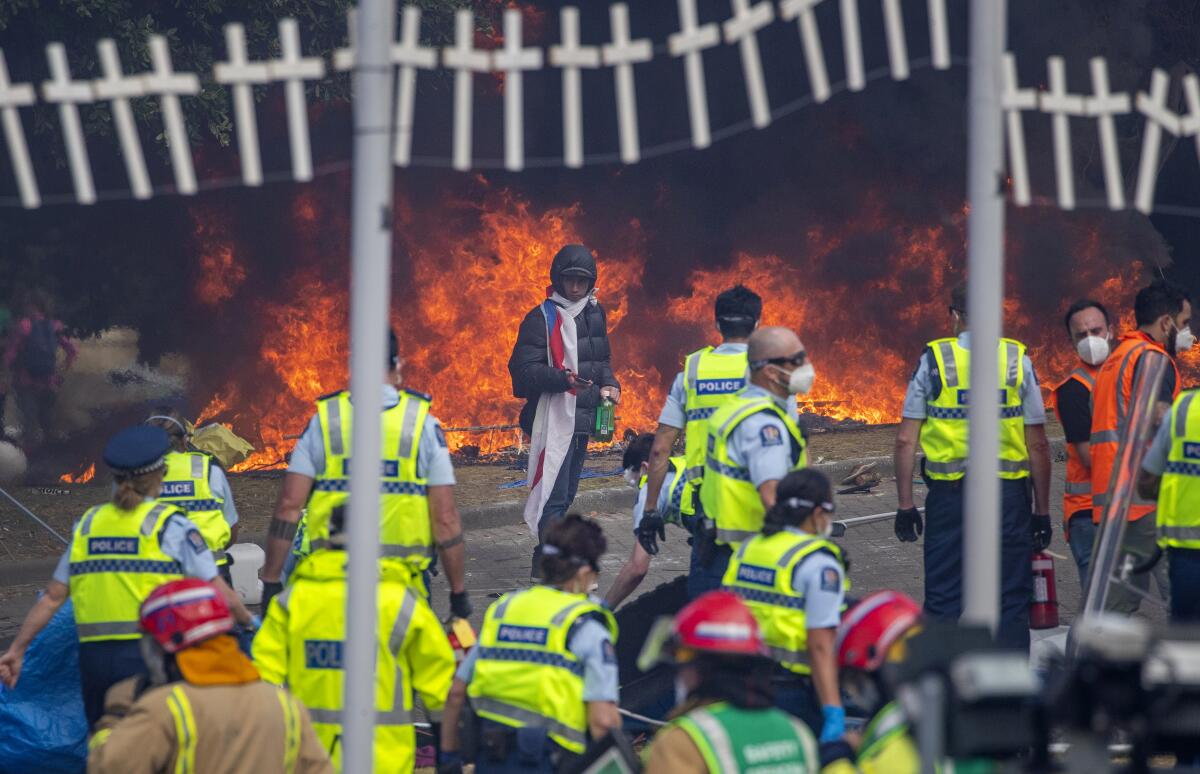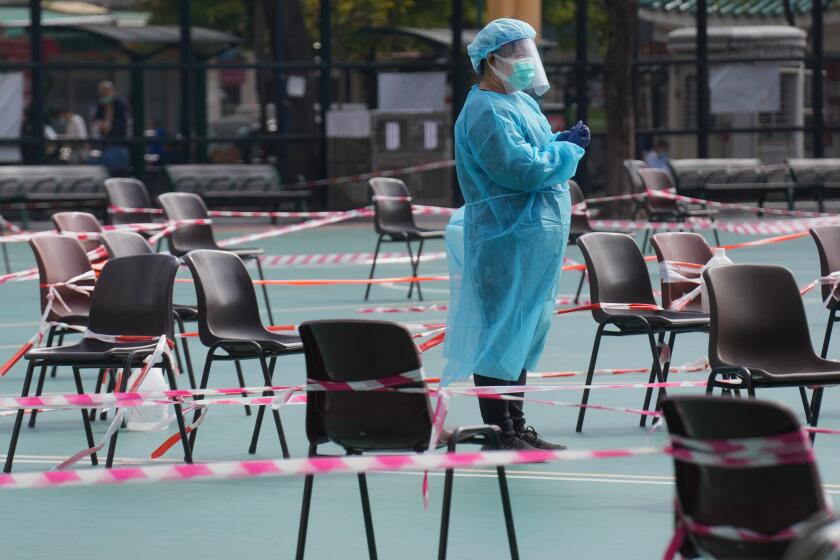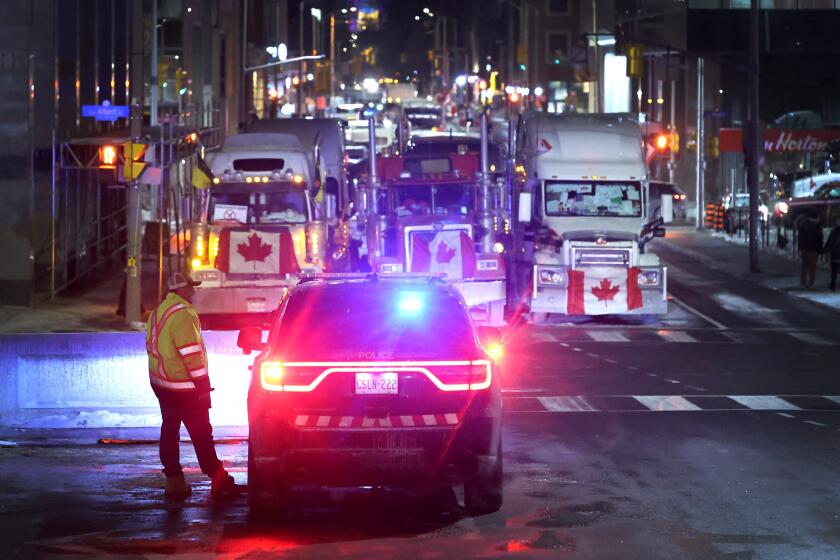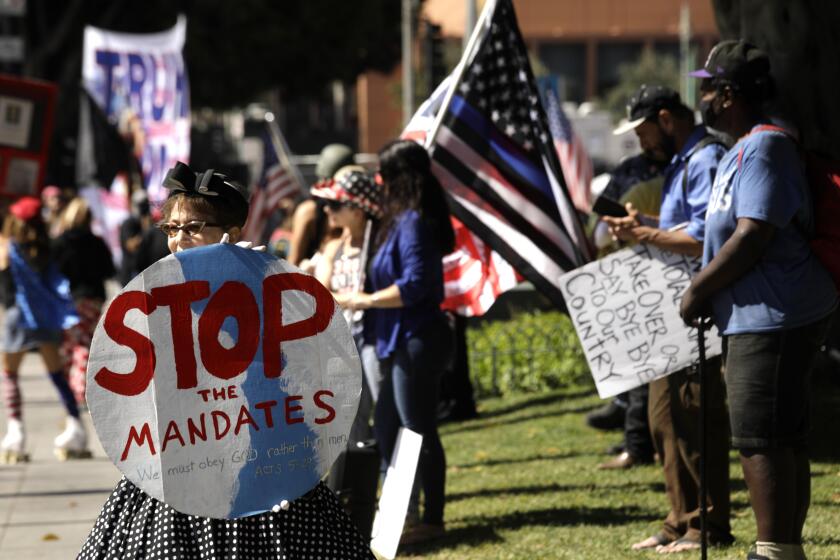New Zealand anti-vaccine-mandate protesters set fires as police break up camp

- Share via
WELLINGTON, New Zealand — Thick black smoke billowed across the grounds of New Zealand’s Parliament and sirens blared Wednesday as retreating protesters against COVID-19 vaccine mandates set fire to tents, mattresses and chairs.
It appeared to be a final act of defiance as police broke up the camp that protesters first set up more than three weeks ago. Police retook control of the Parliament grounds although dozens of protesters remained in nearby streets, some hurling objects at officers. The Parliament’s once carefully manicured grounds were left scarred, a children’s slide in ruins.
Prime Minister Jacinda Ardern said that in planning the operation, police had expected hostility, resistance and violence, but that it was another thing entirely to witness it.
“I was both angry and also deeply saddened to see the Parliament — your Parliament, our Parliament — desecrated in that way, and a children’s playground destroyed, by a small group of illegal protesters,” Ardern said. “But as I say, it’s not something that will define New Zealand’s response to this pandemic.”
Earlier, police wearing riot gear and using pepper spray had moved in on hundreds of people who had been occupying the grounds and surrounding streets. Police efforts in the morning focused on the periphery of the protest before turning to the main camp in the afternoon.
It was the most significant use of force to date by authorities against the demonstrators. As they retreated in the afternoon, protesters tossed objects onto several fires, which police doused with water hoses.
The number of new coronavirus cases reported globally dropped by 16% last week, although some regions are still struggling with large outbreaks.
Protesters said in a statement they were united in wanting mandates dropped and to make their own informed choices regarding their health, free from coercion and punishment. They said the vast majority of protesters had been well-behaved and had chosen to camp as a last resort after other options for dialogue were quashed.
The operation began at dawn, when police started telling people over loudspeakers that they were trespassing and needed to leave. Officers tore down tents in peripheral areas, and a police helicopter circled overhead. Some protesters confronted police and used milk to try to clear pepper spray from their eyes.
Police also towed some of the 300 or so cars, vans and trucks that protesters have used to block streets. The convoy was inspired by similar protests in Canada and has sparked other rallies around New Zealand, leading to a charged political atmosphere.
Ardern’s security detail has been increased after protesters heckled her at events, including as she was leaving a school in Christchurch last week.
Canada deals with images of truckers and others protesting against COVID-19 mandates and leveling other grievances, sometimes with vulgarity and incivility.
Police Commissioner Andrew Coster told reporters that he had brought in several hundred additional officers from around the country for the operation, which would continue until all the vehicles and tents were gone.
Coster said some protesters had sprayed fire extinguishers and thrown paint at officers as they advanced, and others had used makeshift shields and barricades. He said a laser pointer was aimed at the police helicopter.
By Wednesday evening, police said they had towed about 50 vehicles and that 30 more had left the scene. They arrested 65 people on suspicion of trespassing, causing damage and carrying weapons. Three officers were treated at a hospital for non-life-threatening injuries.
Coster said officers decided to move in because previously constructive talks with protest leaders weren’t progressing, and many protesters had left and been replaced by people more intent on violent confrontation.
News Alerts
Get breaking news, investigations, analysis and more signature journalism from the Los Angeles Times in your inbox.
You may occasionally receive promotional content from the Los Angeles Times.
“I was very clear [about] our approach, which was to de-escalate. There is no interest from anyone here of turning this into a fight,” Coster said. “However, this protest has tipped over a balance and it now needs to end.”
Ardern on Wednesday said the protest had been fueled by misinformation and conspiracy theories. She also pointed out that COVID-19 had spread at the protest and some protesters had been hospitalized.
Lawmakers across all parties had refused to meet with the protesters.
Last week one protester drove a car toward a police line, narrowly avoiding officers, and police said some of the protesters had thrown human feces at them.
Fewer and fewer kids are getting inoculated against old foes like measles and smallpox, thanks to rising propaganda. That problem won’t end when the pandemic does.
Before Wednesday’s operation, police had arrested 132 protesters and levied various charges against some of them.
New Zealand is experiencing its biggest outbreak since the pandemic began as the Omicron variant spreads. On Wednesday, health authorities reported a record 22,000 new daily cases.
Ardern has said she plans to begin easing restrictions after the peak of the Omicron outbreak has passed.
About 77% of New Zealand’s population are vaccinated with two doses.
Since the beginning of the pandemic, New Zealand has reported fewer than 100 COVID-19 deaths among its population of 5 million, after it imposed strict border controls and lockdowns to eliminate outbreaks.
More to Read
Sign up for Essential California
The most important California stories and recommendations in your inbox every morning.
You may occasionally receive promotional content from the Los Angeles Times.











